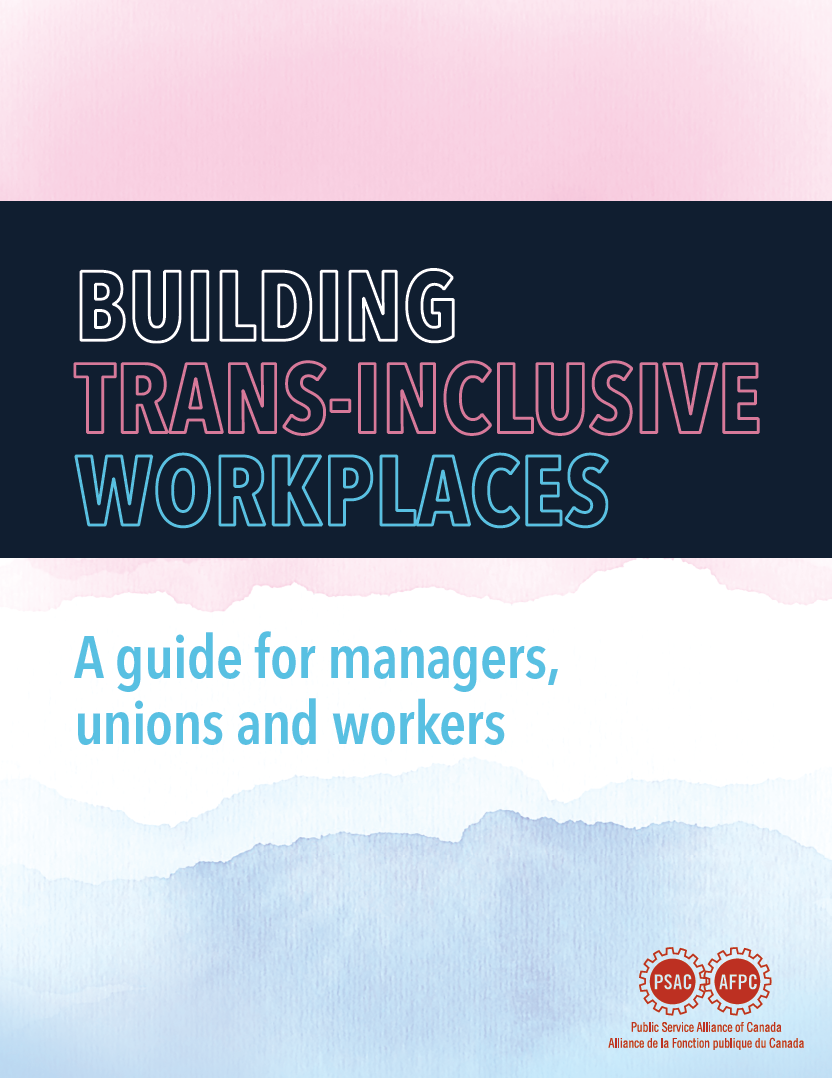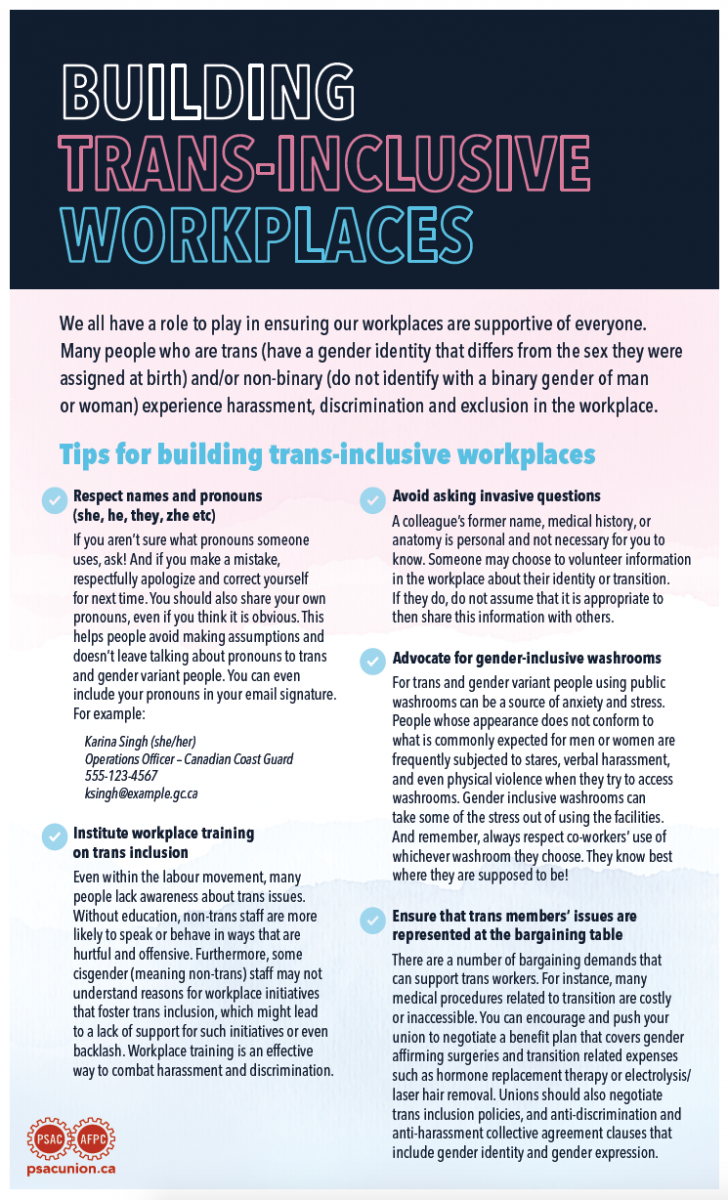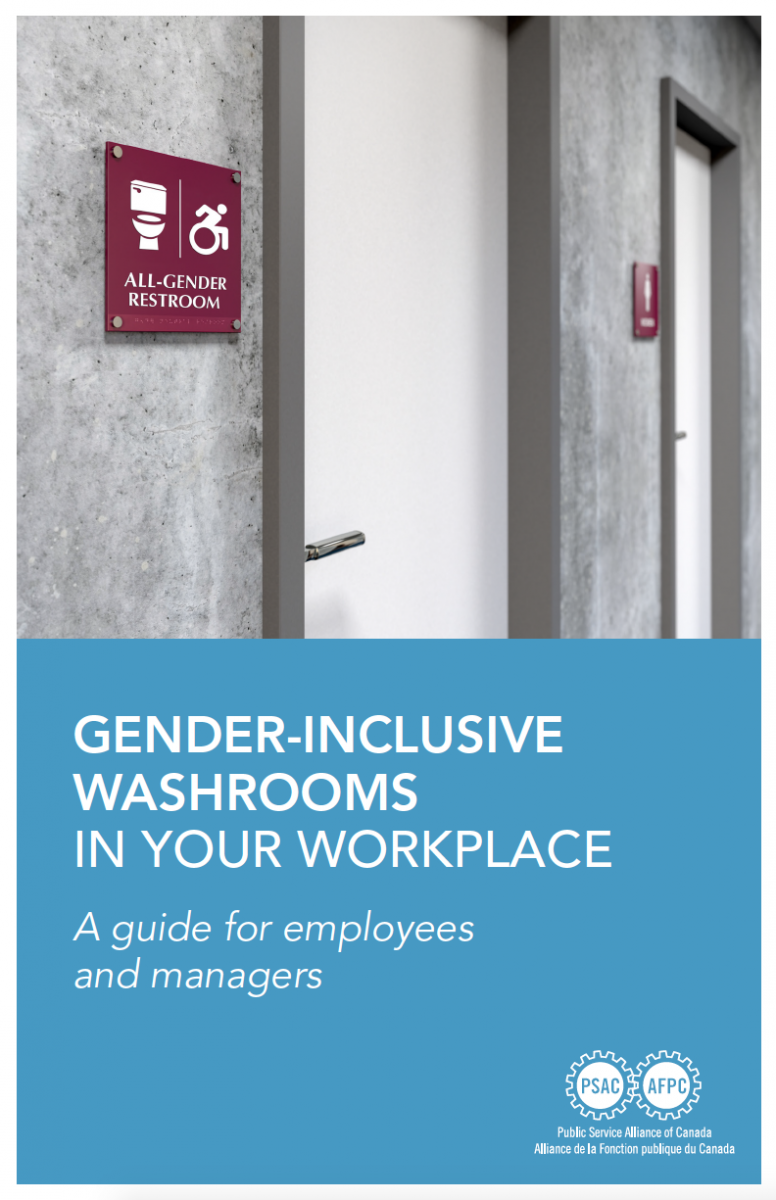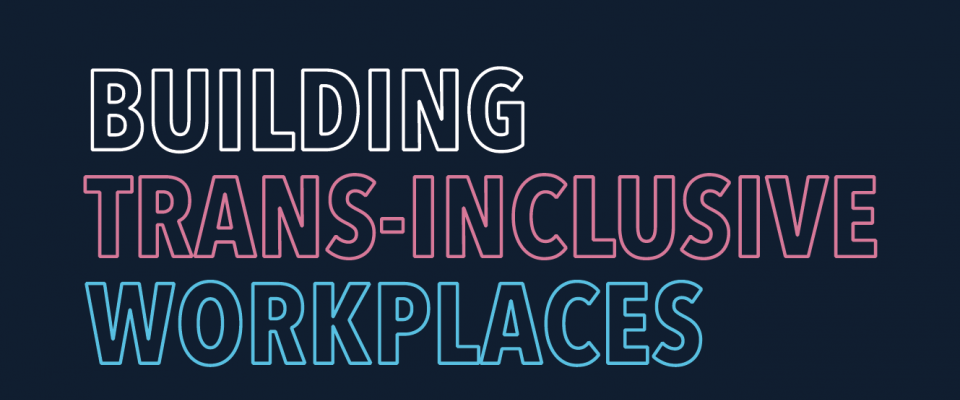Building Trans-Inclusive Workplaces: A Guide for Managers, Unions and Workers

This guide is for anyone interested in building workplaces that are inclusive of trans and gender-variant people (which should be everyone!).
The first three sections: what managers can do, what co-workers can do, and what unions can do, might be most useful for non-trans people.
The final section, ‘When an employee comes out or transitions at work’ offers guidance that could be useful to everyone. If you are trans or questioning your gender identity and would like additional resources for navigating the workplace, please refer to Appendix B: Resources.
If you would like to offer feedback or make suggestions for updates to this guide, please contact PSAC’s Human Rights Officers. We will endeavor to keep the online version of this guide as current and progressive as possible, and we welcome your input.
Building Trans-Inclusive Workplaces: Fact Sheet

We all have a role to play in ensuring our workplaces are supportive of everyone. Many people who are trans (have a gender identity that differs from the sex they were assigned at birth) and/or non-binary (do not identify with a binary gender of man or woman) experience harassment, discrimination and exclusion in the workplace.
-
Respect names and pronouns
-
Institute workplace training on trans inclusion
-
Avoid asking invasive questions
-
Advocate for gender-inclusive washrooms
-
Ensure that trans members’ issues are represented at the bargaining table
Gender-Inclusive Washrooms in Your Workplace: A Guide for Employees and Managers

For trans and gender variant people using public washrooms can be a source of anxiety and stress. People whose appearance does not conform to what is commonly expected for men or women are frequently subjected to stares, verbal harassment, and even physical violence when they try to access washrooms.
Gender inclusive washrooms can take some of the stress out of using the facilities. And remember, always respect co-workers’ use of whichever washroom they choose. They know best where they are supposed to be!
Although much has been accomplished, much more work still needs to be done. PSAC is committed to continuing our work regarding human rights in the workplace, in our communities, and around the world.
 Member Login
Member Login



